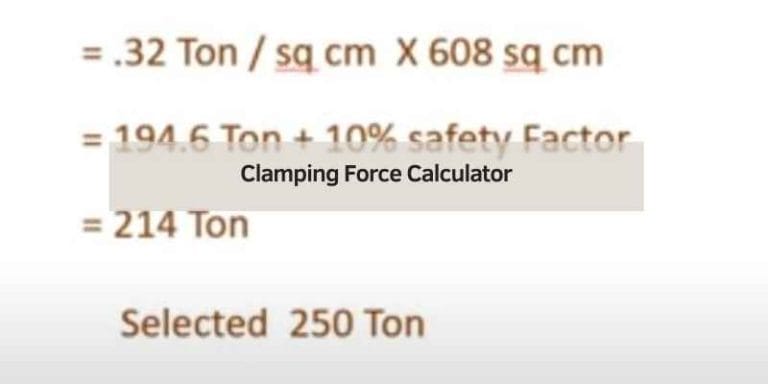How Do You Calculate Wood Cft: Easy Methods to Determine Volume
To calculate the cubic feet (cft) of wood, multiply the length, width, and thickness of the wood in feet. Wood cft is calculated by multiplying the length, width, and thickness of the wood in feet, resulting in the total volume of wood in cubic feet.
By knowing the measurements of the wood, you can easily determine its cft value. This calculation is commonly used in various industries, such as construction and woodworking, to estimate the amount of wood required for a project. By accurately calculating the wood cft, you can ensure you have the correct amount of material needed, avoiding any shortages or wastage.
Understanding how to calculate wood cft is crucial for efficient planning and budgeting in woodworking projects.

Credit: appadvice.com
Understanding Wood Cft Calculation
Calculating the cubic feet (Cft) of wood is an essential skill for anyone working with wood, whether it’s for construction or crafting purposes. By understanding how to calculate wood Cft, you can accurately determine the amount of wood needed for a project, estimate costs, and ensure wastage is minimized. In this article, we will delve into the importance of Cft calculation and the reasons why you should master this skill.
Cubic Feet And Its Importance
Before we explore wood Cft calculation further, let’s first understand what cubic feet means. Cubic feet is a unit of volume that represents a three-dimensional space. In the case of wood, it refers to the amount of wood that can fit into a space measuring 1 foot by 1 foot by 1 foot. This measurement is crucial in determining the quantity of wood required for a project accurately.
Understanding cubic feet is essential for several reasons:
- Accurate Estimation: By calculating the cubic feet of wood needed, you can estimate the exact quantity required for your project. This allows you to purchase sufficient wood without overbuying or falling short.
- Cost Estimation: Knowing the cubic feet of wood required enables you to estimate the cost more accurately. Whether you are a professional or a DIY enthusiast, having a precise idea of the expenses involved helps in budgeting effectively.
- Waste Reduction: Calculating wood Cft helps minimize wastage. With precise measurements, you can optimize the cutting process and ensure you make the most out of the available wood.
Reasons For Calculating Wood Cft
There are several reasons why it’s important to calculate wood Cft:
- Project Planning: Whether you are constructing furniture, a deck, or a house, calculating wood Cft allows you to plan your project effectively. You can identify the exact quantity of wood required and make informed decisions about the materials you need to purchase.
- Cost Estimation: By knowing the cubic feet of wood needed, you can estimate the cost involved accurately. It helps you budget efficiently and avoid surprises or unexpected expenses.
- Inventory Management: For businesses involved in woodworking, calculating wood Cft is crucial for inventory management. It allows you to keep track of the wood stock, avoid shortages, and plan for future production requirements.
- Optimum Utilization: Wood Cft calculation helps you optimize cutting plans and minimize waste. By understanding the exact quantity needed, you can plan cuts efficiently and reduce the amount of leftover or unused wood.
By now, you should have a clear understanding of the importance and benefits of calculating wood Cft. Whether you are an amateur woodworker or a professional, master this skill to enhance your projects’ precision and efficiency.
Basic Wood Cft Calculation
Calculating the cubic feet (cft) of wood is an essential skill for anyone working with wood, whether you’re a carpenter, a woodworker, or a DIY enthusiast. Estimating the amount of wood you need accurately is crucial to avoid any wastage or shortfall. In this article, we’ll walk you through the basic wood cft calculation, breaking it down into simple steps.
Measuring Length, Width, And Height
The first step in calculating the cft of wood is to measure the length, width, and height of the piece of wood you’re working with. Make sure you use the correct units of measurement, such as inches, feet, or centimeters, depending on your preference and availability of tools. Use a tape measure, ruler, or any other measuring tool to accurately determine these dimensions.
Multiplying To Obtain Volume
Once you have the length, width, and height measurements, you can easily calculate the volume of the wood in cubic feet. To do this, multiply the length by the width and then multiply the result by the height. The formula is as follows:
V = L x W x H
Here, V represents the volume, L is the length, W is the width, and H is the height. By multiplying these three measurements, you’ll obtain the volume of the wood in cubic units.
Let’s consider an example for better clarity. Suppose you have a piece of wood that is 6 feet long, 4 feet wide, and 2 feet high. When you apply the formula, the calculation will look like this:
V = 6 x 4 x 2
Calculating this expression, we get:
V = 48 cubic feet
Therefore, the volume of the given piece of wood is 48 cubic feet.
Remember to always double-check your measurements and calculations for accuracy, especially if you’re working on a project that involves multiple pieces of wood. Properly calculating the cft will help you plan your materials efficiently, avoid any unnecessary expenses, and ultimately achieve better results in your woodworking endeavors.
Advanced Wood Cft Calculation
Accommodating Irregular Shapes
When dealing with irregular shapes, a simple formula may not suffice to accurately calculate the wood CFT. In such cases, measuring each irregular dimension and dividing it into regular shapes for calculation becomes necessary.
Using these regular shapes, the total CFT can be calculated and then adding the CFT of each regular shape will give the final CFT of the irregular wood.
Utilizing Formulas For Special Shapes
Special shapes require special formulas to calculate their wood CFT. For instance, circular logs require the application of a specific formula to derive accurate results.
These formulas consider the diameter, length, and shape characteristics of the wood to provide an appropriate CFT figure. Utilizing these specialized formulas ensures precision in wood CFT calculations.
Practical Applications Of Wood Cft Calculation
Calculate the cubic feet (Cft) of wood by using our practical and easy-to-follow wood Cft calculation method. This effective technique enables you to accurately determine the amount of wood required for your project without any hassle or confusion.
Determining Wood Requirement for Construction
Estimating Storage and Shipping Space
Determining the volume of wood required for a project is crucial for accurate planning. Wood Cft calculation helps in estimating how much wood is needed for construction projects.
By calculating the volume of wood needed for construction projects, builders can ensure they purchase the correct amount, reducing waste and cost.
Determining Wood Requirement for Construction
– Helps in accurate planning and reduces waste.
– Ensures the right amount of wood is purchased for projects.
– Crucial for budgeting and overall project success.
Estimating Storage and Shipping Space
– Helps in planning the storage of wood materials.
– Facilitates accurate estimation for shipping space.
– Essential for efficient logistics and inventory management.
Wood Cft calculation has practical applications in various industries, aiding in the efficient utilization of resources.
Tools And Resources For Wood Cft Calculation
When determining the cubic feet of wood, it’s essential to utilize the right tools and resources for accurate results. Here are some effective methods to calculate Wood Cft:
Using Online Calculators
Online calculators offer convenience in determining Wood Cft swiftly and accurately.
Reference Tables And Conversion Charts
Reference tables and conversion charts provide quick access to commonly used wood density values and conversion factors.
Challenges And Solutions In Wood Cft Calculation
Calculating wood cubic feet (Cft) can present various challenges, from dealing with varying wood densities to addressing measurement errors. In this blog post, we will explore the common challenges encountered in wood Cft calculation and provide practical solutions to tackle them effectively.
Dealing With Varying Wood Densities
Wood densities can vary significantly depending on the species and moisture content. When calculating wood Cft, it’s crucial to consider these variations to ensure accurate results. One solution is to use specific density values for different wood species, which can be obtained from reliable sources or databases.
Addressing Measurement Errors
Measurement errors can impact the accuracy of wood Cft calculations. To address this challenge, it’s essential to standardize the measurement process and use precise tools such as calipers or rulers. Regular calibration of measuring instruments can also help in minimizing errors and ensuring consistent results.
Importance Of Accuracy In Wood Cft Calculation
Accurately calculating the cubic feet (cft) of wood is crucial for various aspects of woodworking projects. Whether you’re building furniture, flooring, or a whole structure, knowing the exact amount of wood required not only impacts project budgets but also ensures the proper utilization of resources. In this article, we delve into the significance of accurate wood cft calculations in terms of budgeting and resource management.
Impact On Project Budgets
Calculating wood cft accurately has a direct impact on project budgets. When you accurately estimate the amount of wood needed for a project, you can minimize wastage and reduce unnecessary expenses. By avoiding overestimation or underestimation of the required wood, you can save money on purchasing materials or prevent additional costs incurred from ordering extra wood due to miscalculations.
An underestimated wood cft calculation can lead to delays and increased project costs as additional wood needs to be ordered, disrupting the workflow. On the other hand, overestimating the wood required can result in extra wood lying unused, which not only adds to the expense but also creates storage issues.
Ensuring Proper Utilization Of Resources
Accurate wood cft calculations not only contribute to budget management but also ensure the efficient utilization of resources. By determining the precise amount of wood required, you can avoid unnecessary depletion of natural resources. This is particularly important in the context of environmental sustainability and responsible woodworking practices.
Furthermore, proper resource management enables you to optimize the use of available wood, reducing waste and promoting eco-friendly practices. By minimizing scrap and excess wood, you not only reduce material costs but also contribute to a cleaner and more sustainable woodworking environment.

Credit: m.youtube.com

Credit: m.youtube.com
Frequently Asked Questions On How Do You Calculate Wood Cft
How Is Cubic Feet (cft) Calculated For Wood?
To calculate wood cubic feet, multiply length, width, and height in feet, and divide by 144.
Why Is It Important To Know Wood Cft?
Understanding wood cubic feet helps to estimate material for projects accurately.
Can Wood Cft Differ Based On The Type Of Wood?
Yes, different wood types have varying densities and volumes affecting cubic feet calculation.
How Can Accurate Wood Cft Calculation Save Costs?
Accurate calculation prevents material wastage, saving money on unnecessary purchases.
Conclusion
Calculating wood CFT is essential for accurate measurements in the woodworking industry. By understanding the formula and using the right techniques, you can effectively determine the cubic feet of wood needed for various projects. Whether for personal or professional use, mastering this calculation can greatly benefit your woodworking endeavors.







